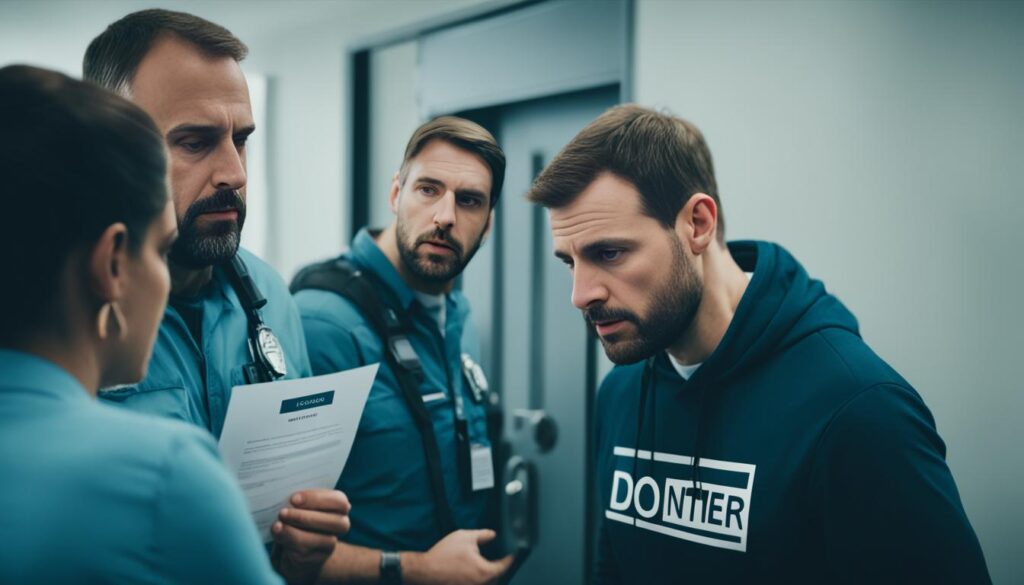Groupthink is a big deal in psychology. It affects how we make decisions and act. People often choose to fit in with a group rather than think for themselves. This can lead to poor judgement. Picture a group choosing similar answers about a shape test. They do this more as they talk, showing the pull of social pressure on what we think1.
Groupthink has had big impacts in our world. For example, in the 1961 Bay of Pigs operation, a group of U.S. officials failed because they all agreed with the same wrong plan. The 1986 Challenger space shuttle disaster happened because not listening to different ideas. This can be seen today in how people only hear what they want on social media and online groups2.
Still, groups can do great things when they work together well. Tasks get done better when everyone agrees and helps each other. Good groups share ideas which leads to better decisions. This is good news for complex projects3.
But, groupthink can straight up lead to bad choices. When everybody looks the same way, important voices get lost. This has caused serious issues in history, like war decisions and not stopping the Nazis early enough. If we mix up the people in groups, we get more opinions, which is better for picking the right path3.
Knowing about groupthink is key today, especially with social media around. Bots online can twist what we think by repeating certain ideas. This changes our own thoughts. That’s why it’s important for websites to keep an eye out and make sure content leads to helpful talk1. Getting rid of these bots and promoting fair discussions can turn things around in public conversations for the best1.
In the end, groupthink is a strong force in our lives. It can cause problems or help if done right. We must not be afraid to speak up or think different to have better decisions made. Understanding why we choose as a group is the first step to making smarter choices as a whole.
Key Takeaways:
- Groupthink influences decision-making and behavior by prioritizing conformity within a group over independent thinking and critical evaluation.
- Large groups tend to converge on fewer categories, highlighting the impact of social influence on individual perceptions.
- Historical examples, such as the Bay of Pigs invasion and the Challenger disaster, demonstrate the consequences of groupthink.
- Promoting positive interdependence and diversity within groups can enhance decision-making and mitigate the risks of groupthink.
- Social media and the presence of bots play a significant role in shaping public discourse and opinions, emphasizing the need for awareness and effective strategies.
Signs and Symptoms of Groupthink
Groupthink, an idea from Irving L. Janis in 19724, shows groups making decisions in a certain way. Knowing the signs can help us see when groupthink might be happening. Then, we can try to stop its bad effects.
One sign of groupthink is thinking everyone agrees4. Even if some people don’t, members might feel the group is totally on the same page. This can block new ideas.
Believing without question4 is a big groupthink symptom. Group members might ignore possible bad outcomes or moral concerns. This can lead to bad decisions without thinking about what’s right.
Rationalizing is a habit in groups hit by groupthink4. People might make up reasons to support their stance, avoiding checking if they’re right. This can stop them from really looking at other ideas.
Labeling others is a clear sign of groupthink4. It happens when group members think negatively about those not agreeing with them. This can make it hard for new thoughts to come in.
Not saying what you really think is common in groupthink groups4. People might stay quiet to avoid trouble. But this can stop good talks and idea sharing.
“Mindguards” keep opposing ideas away4. They shield the group from thoughts that might challenge them. This could leave out important things, leading to bad decisions.
Feeling too confident can feed into groupthink4. If a group believes it’s never wrong, it might take big, risky steps without looking at the downsides. This leads to careless choices with bad results.
Pressure to fit in can be a strong force in groupthink4. Members might feel pushed to agree, making it hard for fresh thoughts to find space. This can make people avoid thinking on their own.


Causes of Groupthink
Groupthink is a big problem that affects how groups make decisions. It happens for many reasons. Knowing these reasons helps stop groupthink’s bad effects.
One big cause is having people in the group who are all very similar. If everyone’s alike, they may not see ideas from different angles. This feeling of always being right stops them from looking at other solutions5.
Also, having a strong leader can be a problem. If this leader only listens to their own ideas, it can lead the group into groupthink5. Leaders might make their team afraid of being punished or make them promise blind loyalty. This stops members from saying what they really think.
A group might also fall into groupthink because they lack important skills. If team members don’t know much about something, they lean on others too much5. Instead of thinking hard for themselves, they just go along with what others say. This can hurt how they make decisions.
Putting pressure on a group can make groupthink more likely. When deciding something very hard or in a hurry, the group might not think clearly5. The stress of these situations can make people rely on agreeing with the group, even if they have doubts.
Groups that feel very close are at risk too. When a team is very tight-knit, members might not want to disagree. They fear ruining the good vibe or causing drama more than they worry about finding the best solution5.
Another issue is when a group only looks at ideas that fit their own. This blocks them from seeing a variety of viewpoints5. They just stick to their own opinions, even if there might be better ways to do things. They ignore what doesn’t support their view.
Finally, when group members want to avoid hurting each other’s feelings, they might not speak up. People don’t want to be left out or disliked. This can lead to everyone just going along with the group, without really thinking things through5.
So, there are many reasons why groupthink happens. These include having a group of similar people, strong leaders, lacking skills, feeling pressured, being very close, and avoiding tough conversations5. Knowing these points helps us stop groupthink before it messes up important decisions.


Historical Examples of Groupthink
Groupthink is when a group ignores different views to keep everyone happy. It has been big in history, swaying many important decisions. The fights over Vietnam, the scandal of Watergate, and the world money troubles in 2008 show us its dark side.


The Vietnam War
The Vietnam War was a big mess influenced by groupthink. Spanning 1955-1975, it caused the deaths of many soldiers and civilians. The people in power then didn’t take a hard look at the situation. They made wrong guesses about how hard the war would be6.
The Watergate Scandal
The 1970s Watergate scandal dented the Nixon government’s image. It began with a break-in at the Democrats’ office. This misuse of power led to Nixon quitting. Groupthink helped hide the crime and stop anyone from speaking up against it, leading to a big problem for the country 6.
The 2008 Economic Crisis
The tough 2008 money disaster shook the world’s economies. It started with huge money businesses failing, and the US homes market crashing. Groupthink was part of the problem. Banks and others didn’t check risks enough and trusted bad ideas. Millions lost their jobs and homes6.


These events show how groupthink can mess up important choices. It’s a warning to watch out for groupthink’s traps. Listening to different ideas and encouraging people to speak up can help us avoid its pitfalls. This way, we can make smarter choices and avoid bad outcomes6.
Consequences of Groupthink
Groupthink affects how groups make decisions and solve problems. It leads to not thinking effectively, hiding personal thoughts, and having a one-sided view of what’s right.
It silences individual ideas and blocks creative solutions7. People in the group may not speak up with their unique insights. This can mean critical options are not explored, making it hard to see all possible issues.
Group members often don’t voice their different thoughts to avoid upsetting the team7. This stops them from questioning and considering new ways to solve problems. They might miss important details because they’re focused on agreement.
Groupthink can make people overly confident about their choices7. They might think they’re right and ignore feedback or other ideas. This can narrow their focus, missing out on important risks and choices.
In fields like medicine, the military, or politics, groupthink can be very dangerous. Using only a few views, not considering all dangers, or not preparing for what might go wrong can have huge and often bad consequences.
Looking at examples like Pearl Harbor, the Vietnam War, and the Bay of Pigs shows how groupthink led to big mistakes7. These cases highlight the need to be wary of too much conformity in making decisions.
Preventing groupthink means encouraging everyone to share different views, accepting many perspectives, and supporting open talks7. This way, groups can avoid falling into the traps of agreeing too easily and missing out on important decisions.
Not every poor decision is because of groupthink, and sometimes groupthink boosts confidence and helps make choices faster7. However, it’s always important to watch out for collective biases and plan carefully to avoid bad outcomes.
Distinction between Groupthink and Conformity
When we look at how groups make decisions, knowing the difference between groupthink and conformity is crucial.
Groupthink happens when people give up thinking for themselves and agree with the group’s majority view8. This need to belong can lead to shunning different ideas and not thinking critically4. Strong bonds within the group can make groupthink more likely4. People with rigid thoughts, who seek clear answers, often fall into groupthink8. This pattern can be found in events like the Vietnam War escalation and the Bay of Pigs invasion4.
Conformity is different. It means adjusting your behavior to match a group’s ways8. This is usually because we all want to fit in. Even if we know the group’s choice is wrong, we might still go along with it8. In the 1950s, Asch found that about 75% of people changed their answers to please the group8. Wanting to be liked can make us change our own minds to do what everyone else is doing8.
Conformity and groupthink are two separate ideas, though related. Groupthink is about how a group makes decisions together. Conformity is about each person fitting in with a group8. They show how much our social surroundings can influence our choices. This tells us a lot about why we do things when we’re part of a group, pointing out how we respond to outside pressures.
Manipulating Groupthink and the Role of Bots
Studies show that groupthink is vulnerable to manipulation. Social media platforms, with their artificial users or bots, are key in this. Bots influence how individuals in a group think9.
Online studies echo how social media can skew collective thought. Bots don’t just spread ads. They interact to change what people in groups think and do9.
Cambridge Analytica used data to swing views in the 2016 U.S. election and Brexit. This showcases the power of targeted data in steering group opinion9.
After Cambridge Analytica’s 2018 shutdown, the value of user data became clear. Now, companies and even governments use data to push their goals by swaying public opinion9.
Bots also shape how we see social media accounts. A study found that people upped their bot guess after learning more. This shows bots really do change our view of online relationships10.
The guesses on bot presence were even higher than some reports. This means people often overestimate how many bots are on social media10.
Colored by looming dangers, we must deal with bot trust and privacy worries. Creating chatbots that behave well helps. It reduces harmful beliefs stemming from biases and stereotypes11.
Using both qualitative and quantitative data from users can enhance these well-behaved chatbots. They need to reflect ethical values in their design. This way, they can positively influence people and how they interact online11.


The Influence of Group Size on Thinking
Group size affects how we think. In small groups, everyone sees things differently12. This brings new ideas and can solve problems in creative ways. But in bigger groups, people tend to think more alike12.
With more people, certain ideas become very popular. And people start thinking in these popular ways12. Even with many different ideas, a big group is likely to agree on just a few. This happens because people want to fit in and agree with each other.
Different sizes of groups change how decisions are made. Smaller groups are better at exploring many ideas13. But, as a group grows, it may focus more on staying calm and avoiding disagreements. Then, it could miss important viewpoints.
Knowing about group size helps us work better together. We learn when to have a small creative team and when to gather a larger group for decisions. This way, we get the best of both worlds and make better choices.
Remember, group size is just part of the story. Who is in the group, how they work together, and the environment matter a lot, too. By paying attention to these details, we can benefit from everyone’s ideas without falling into bad group decisions.
The Role of Social Media in Groupthink
Social media has changed the way we interact and share information. But its impact goes further, affecting how we think and make decisions together. It’s a key player in shaping our group attitudes and the way we see the world14.
Influencers on social media play a huge part in this. They’re at the heart of a multi-billion-dollar economy. These influencers can change what we think, reinforce ideas, and shape discussions in big ways14.
But it’s not just influencers. The very design of social media also influences how we see information. By tagging news as “fake” or “real,” social media can steer our opinions. This can lead to stronger beliefs and block us from different viewpoints, creating echo chambers15.
Social media makes us crave approval from our online friends and communities. Every like and message we get feels like a reward to our brain. This pushes us to keep using the platform and join in with our group’s way of thinking.
As we try to fit in, we might end up thinking like everyone else around us. We could start to see our group as all good and the people outside it as bad. And this way of thinking can lead to group behavior and shut out different opinions14.
Liking and sharing posts that support our group, while attacking the opposite, can make political differences even worse. Seeking approval and validation can make us ignore new ideas and stick to our group’s views. This can make it hard for fresh thoughts to be heard and really thought about1415.
The impact of social media on groupthink reaches far and wide. It affects individual choices and big decisions, like public policies. It can even challenge how we get along in society. But knowing how social media influences our thinking can help us fight its harmful effects. We can work towards a more open and varied way of discussing and understanding our world.
Addressing and Minimizing Groupthink
It’s vital to deal with groupthink to make better decisions and avoid problems. Encouraging critical thinking and different views helps groups. They can avoid the downsides of groupthink and choose better.
To fight groupthink, putting a “devil’s advocate” in the group is a great idea. This person’s job is to question common views and bring up new ideas. Having someone challenge the status quo boosts critical thinking, leading to better choices16.
“Utilizing outsiders’ opinions can provide clarity and alternative perspectives,” says psychologist Irving Janis. Looking for opinions outside can offer fresh ideas. This breaks the cycle of same thoughts and welcomes different views, essential for good decisions17.”
Also, it’s key to keep an environment that supports creative thinking. Recognizing and sharing creative ideas stops groupthink. This way, groups create a space for new thinking and innovative solutions.
Encouraging small group talks is another good step against groupthink. Smaller teams tend to think more critically, offering a wide range of ideas. This leads to better choices overall16.
By enabling these discussions, organizations can avoid some of the traps of groupthink.
To sum up, combating groupthink calls for a culture of critical thinking and embracing different opinions. Tactics like having a devil’s advocate, getting outside views, and promoting creativity are crucial. Welcoming diverse thoughts and critical views is key in fighting groupthink’s dangers161718.
The Importance of Challenging Group Consensus
Group consensus helps teams make decisions fast. Yet, it’s vital to push against common beliefs and welcome new viewpoints19. When a group cooperates, it often outperforms individuals, especially in tricky projects. More eyes mean spotting and fixing errors that slip by a single person19. Also, a team’s shared memory and ability to remember key facts get stronger through interaction. When each member brings something unique to the table, decision-making gets richer19.
Daring to disagree with the team norm improves solving problems and making choices. It stops the error when people assume everyone thinks like them, called the false consensus effect20. This can make people too sure of their beliefs and stop them from understanding others20.
Having many viewpoints is key to making the best choices19. Diverse teams are less likely to fall into groupthink, where everyone just agrees. This can lead to bad decisions. Diverse groups also fight against the trap of only discussing what they all know, overlooking hidden gems known by only a few19. Listening to different ideas results in smarter choices.
Questioning what everyone else thinks encourages thinking and creativity. It gets everyone talking and sharing their own take, rather than going with the flow. By steering clear of groupthink and valuing being different, teams can achieve better decisions and respect different opinions2019.
FAQ
What is groupthink?
Groupthink is when people in a group all try to agree. They might ignore their own ideas to keep everyone happy.
What are the signs and symptoms of groupthink?
Signs of groupthink include everyone agreeing, blindly following beliefs, and coming up with reasons to back these beliefs. People might also start to see others as just one thing, hide their views, protect the group from outside ideas, feel invincible, or even push others to agree.
What causes groupthink?
Groupthink can happen for many reasons. These include a strong group identity, leaders who are too powerful, lack of knowledge, high stress, and tough moral choices.
Can you provide historical examples of groupthink?
There have been many famous cases of groupthink. This includes getting more involved in the Vietnam War, the Watergate scandal, the 2008 financial crisis, and not listening to warnings before Pearl Harbor got attacked.
What are the consequences of groupthink?
Groupthink can make finding good solutions hard. It might make people hide what they really think, feel overly right about their choices, and not welcome new viewpoints or facts.
What is the distinction between groupthink and conformity?
Groupthink is about how a group makes decisions. Conformity is fitting in with a group’s behaviors. While conformity can lead to groupthink, it’s not always what causes it.
How can groupthink be manipulated, especially through social media?
Studies show that social media can manipulate groupthink. Using fake accounts or bots online is one way. They can keep repeating certain ideas to change public opinion.
Does the size of a group impact groupthink?
Yes, group size does matter in groupthink. As more people join, there’s less variety in thoughts. This can lead to more ideas being accepted without much challenge.
What role does social media play in groupthink?
Social media is a big part of today’s groupthink. It keeps showing us the same ideas over and over. This can affect our opinions and strengthen specific stories.
How can groups address and minimize the negative effects of groupthink?
To fight groupthink, groups should like different views. They can appoint someone to challenge the majority. Seeking outside opinions, rewarding new ideas, and not silencing those who question are helpful.
Why is it important to challenge group consensus?
It’s key to question the group’s agreement for better decisions. Bringing in different views leads to smarter choices. This helps avoid the pitfalls of groupthink.
Source Links
- The power of groupthink: Study shows why ideas spread in social networks | Haas News | Berkeley Haas – https://newsroom.haas.berkeley.edu/research/the-power-of-groupthink-study-shows-how-easy-it-is-to-influence-social-networks/
- The Psychology of Group Thinking: How Our Social Identity Affects Decision Making – https://medium.com/mind-talk/the-psychology-of-group-thinking-how-our-social-identity-affects-decision-making-f6b4f93df9b9
- 10.3 Group Decision Making – https://opentextbc.ca/socialpsychology/chapter/group-decision-making/
- The Psychology Behind Why We Strive for Consensus – https://www.verywellmind.com/what-is-groupthink-2795213
- What Is Groupthink In Psychology? Definition & Examples – https://www.simplypsychology.org/groupthink.html
- Examples Of Groupthink In Historical And Contemporary Contexts – FasterCapital – https://fastercapital.com/topics/examples-of-groupthink-in-historical-and-contemporary-contexts.html
- Groupthink | Psychology, Decision-Making & Consequences – https://www.britannica.com/science/groupthink
- Groupthink And Conformity – https://www.bostonkravmaga.com/blog/personal-safety/psychology/groupthink-and-conformity.html
- Behind Social Media: A World of Manipulation and Control – https://scholarcommons.scu.edu/cgi/viewcontent.cgi?article=1048&context=engl_176
- Exposure to social bots amplifies perceptual biases and regulation propensity – Scientific Reports – https://www.nature.com/articles/s41598-023-46630-x
- Beyond words: social psychology in conversation design – https://bootcamp.uxdesign.cc/beyond-words-social-psychology-in-conversation-design-e4ae112a2af
- The Psychology of Groups – https://nobaproject.com/modules/the-psychology-of-groups
- The Influence of the Group Upon Association and Thought – https://brocku.ca/MeadProject/Allport/Allport_1920a.html
- Social Media and Herd Mentality – https://www.psychologytoday.com/us/blog/balanced/202309/social-media-and-herd-mentality
- Groupthink, individualism, and how social media contributes to both – https://www.thedailystar.net/shout/news/groupthink-individualism-and-how-social-media-contributes-both-2947921
- How to Avoid Groupthink: 5 Tips for Better Collaboration – https://www.dialpad.com/blog/how-to-avoid-groupthink/
- Groupthink Psychology & How To Avoid It | De-Risk – https://www.de-risk.com/groupthink-and-risk/
- Groupthink – https://en.wikipedia.org/wiki/Groupthink
- Group Decision Making | Principles of Social Psychology – https://courses.lumenlearning.com/suny-social-psychology/chapter/group-decision-making/
- False Consensus Effect – The Decision Lab – https://thedecisionlab.com/biases/false-consensus-effect
